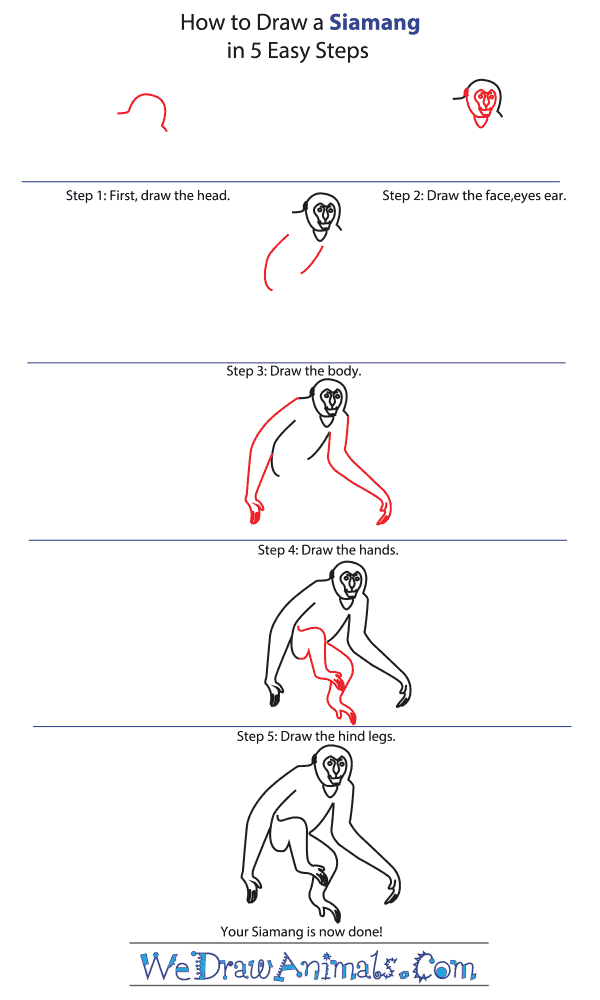In this quick tutorial you'll learn how to draw a Siamang in 5 easy steps - great for kids and novice artists.
The images above represent how your finished drawing is going to look and the steps involved.
Below are the individual steps - you can click on each one for a High Resolution printable PDF version.
At the bottom you can read some interesting facts about the Siamang.
Make sure you also check out any of the hundreds of drawing tutorials grouped by category.
How to Draw a Siamang - Step-by-Step Tutorial
Step 1: First, draw the outline of the head and shoulders
Step 2: Draw the face and ears. Draw a small c for the ear and make a curved line to separtate the head from the neck. Draw a small triangle to make the beard. Draw the outline of the face and fill in the eyes, nose, and mouth
Step 3: Draw the torso with two lines
Step 4: Now, draw the arms and hands coming from the shoulders. The arms are longer than the torso
Step 5: Draw the legs and feet to finsh. Draw the legs crossed and bent
Interesting Facts about the SIAMANG
The Siamang is a member of the gibbon (small apes) family and the scientific term for them is Symphalangus syndactylus. This animal is twice the size of other gibbons and the only species within the genus of Symphalangus. As with other tailless tree dwellers, they can live together, but this species is the only type that has a membrane between some of its toes, and a large inflatable throat sac to sing.
Did you know?
- These can live over 30 years in captivity.
- It can be found at over 12,000 feet in altitude.
- They congregate in up to 6 individuals.
- This animal can grow over 3 feet tall.
- These types usually have 1 mate in their life.
- It uses over 50% of its time awake to rest.
- They are mostly vocal from 9 to 10 am.
This type of animal is nearing extinction on the endangered list, from production industries destroying forest areas. Most of their diet consists of fruit with majority of it being from fig trees. Many plant species are consumed, and occasionally insects. The mates spend more time with each other than other gibbons. They makes sounds at morning to scare intruders.






